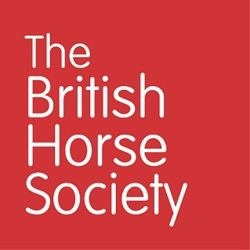| 1. Know the roles and responsibilities of a Stage 2 Ride Leader |
1.1 Describe the role and responsibilities of the ride leader |
- Caring for and meeting the needs of horse’s health and welfare
- Communicating with others relating to horse care and yard activity
- Checking the allocation of horses to riders
- Taking rides out following a designated route
- Working according to instruction
- Responding to incidents and emergency situations involving the horse and/or rider
- Recording relevant information from clients
- Recording accidents and incidents
- The need and contents of a risk assessment for a ride out
|
Discussion |
| 1.2 Discuss a prepared risk assessment |
- Risk assessment of a designated route provided by assessment centre
|
Discussion |
| 1.3 Discuss a prepared route on a map |
- Familiar or unfamiliar areas
- Understanding Ordnance Survey Maps
- Give accurate grid reference
- Interpret map keys and symbols
- Using a GPS system
|
Discussion |
| 1.4 Understand the codes of conduct for riding out |
- Highway Code, Countryside Code and Rules of the Road (Ireland)
- Road signs and markings
- Legislation governing where to ride
- The importance of appropriate clothing for riding out
|
Discussion |
| 2. Prepare to take out a ride |
2.1 Check rider’s equipment for safety and suitability |
- Riding hats
- Footwear
- Hi-vis clothing
- General clothing
|
Observation, Discussion |
| 2.2 Check tack for comfort and safety |
- Check the tack on the horse for comfort
- Check the tack for safety
|
Observation, Discussion |
| 2.3 Mount and dismount the riders as required |
- Assist riders to mount using a mounting block
- Check girth
- Alter stirrups as required
- Assist riders to dismount
|
Observation, Discussion |
| 2.4 Provide basic instruction to riders |
- Mounting
- Holding reins
- Position in saddle
- Feet in stirrups
- Start, stop, steer
- Controlling the horse
- Positional development
- Rising trot
- Dismounting
|
Observation |
| 2.5 Assess riders for a specific level of ride |
- Beginner ride
- Walk and trot ride
- Walk, trot and canter ride
- Experienced ride
- Handling the horse
- Rider confidence
- Suitability of horse allocation
|
Observation, Discussion |
| 2.6 Demonstrate appropriate regard for safety |
- Control of ride
- Safe distances between horses
- Assessment of rider ability
- Meeting legal requirements
- Adhering to risk assessment
- Maintain safety of self and others
- Safeguarding
|
Observation, Discussion |
| 2.7 Use appropriate verbal and non-verbal communication |
- Volume
- Tone
- Language
- Terminology
- Body language
- Demonstrations
- Positioning of self
|
Observation |
| 2.8 Demonstrate appropriate behaviour management skills |
- Rules
- Expectations
- Consistency of approach
- Resolving conflicts
|
Observation |
| 3. Be able to ride as part of a group in an open space |
3.1 Ride independently as part of a group in an open space |
- All three paces
- Up and down hills
- Across fields, roads and bridle paths
- Negotiate hazards/obstacles
- Open and close a gate
|
Coach Endorsement |
| 4.1 Ride a horse in a group |
- In walk, trot and canter
- In open and closed order
|
Observation |
| 4.2 Ride a horse with the reins in one hand |
- With stirrups
- In preparation for ride and lead, opening gates or negotiating hazards
- Change of direction and pace
|
Observation |
| 5. Ride and lead a horse and rider |
5.1 Ride and lead another horse and rider in an enclosed space |
- Dismount
- Attach lead rein
- Mount whilst maintaining control of both horses
- Correct positioning of horses
- Communicate effectively with the rider being led
- Remount maintaining control of both horses
- Ride and lead in walk and trot showing turns
|
Observation |
| 5.2 Describe how to negotiate potential hazards |
- Narrow track
- Gateway
- Road
|
Discussion |
